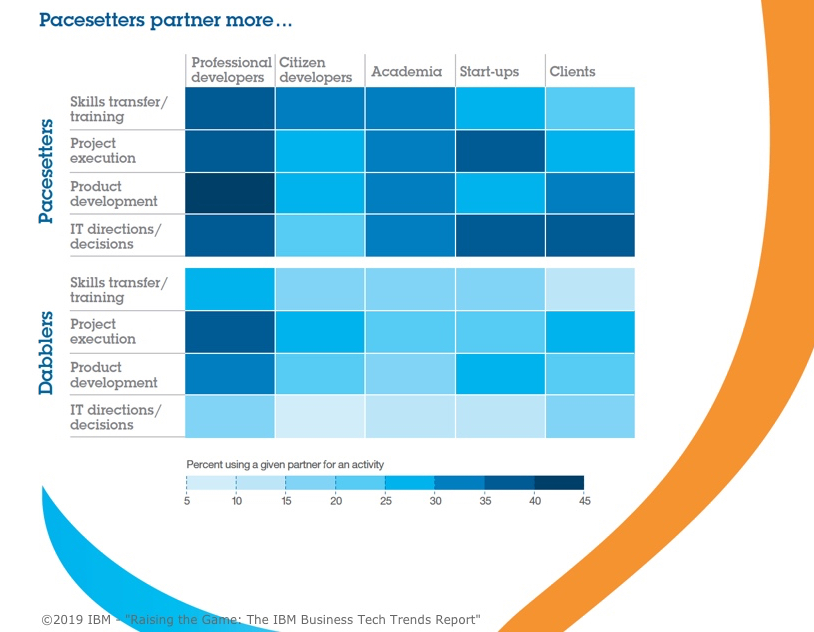
Image by: Cecilie_Arcurs, ©2019 Getty Images
Speed and agility have become necessary drivers for organizations to achieve their digital transformation goals. Just like many intuitive, consumer-facing tools that led to the rise of shadow information technology (IT), business-friendly technologies, like low- and no-code platforms, are allowing non-technical individuals and departments to develop their own applications easier and faster than the IT department can hope to deliver.
But how can IT effectively manage an organization’s applications when anyone can be a developer?
According to Gartner Vice President Jason Wong, these business-led IT efforts are "open and transparent from start to finish, whereas shadow IT is hidden and under the radar for all or part of its life cycle." Mr. Wong also points out a second, and more important, distinction between the two: IT projects that are driven from the business unit is often a much more collaborative partnership between the IT department and the business.
This particular trend is on an upward swing, and current business-led IT practices make up about 36% of the IT budget, according to a recent Gartner survey.
In a new research report titled "The Future of Apps Must Include Citizen Developers," Gartner recommends taking advantage of business-led citizen development to supplement corporate IT efforts while also ensuring that such development meets the policies and standards of the overall IT policy. The reality is that business units and individuals are going to develop their own apps. IT departments have a choice: Work together with business units in a structured process or force citizen developers to become shadow IT.
Developers Here, There, and Everywhere
Gartner defines a citizen developer as “a user who creates new business applications for consumption by others using development and runtime environments sanctioned by corporate IT.”

In a recent Gartner survey on citizen development, they report that 41% of respondents already have citizen development initiatives in place, while another 20% are currently evaluating or planning to start an initiative. The uptick in business-led IT spend is largely related to increased software, application, and database development.
This trend also tackles the large talent abyss that many organizations face when implementing disruptive technologies, like big data, analytics, cloud, mobile, and social. According to a recent IBM survey, 80% of surveyed organizations are partnering with citizen developers to minimize the skills gap for application development.

Gartner reports the top use cases for citizen development include forms or data-collection apps, followed by orchestrating business process and workflows, and replacing paper, email, or spreadsheets.
To help organizations bring citizen application development into the fold, Gartner outlines three steps to maximize benefits for both the business and IT.
1. Define and Establish Safe Zones
Find out where citizen development is already happening in your organization. Gartner points to operations and administrations as the best places to start. Find the power users, who will become your evangelists for citizen development. Then have IT work with those leaders to create a governance framework to define the boundaries for citizen devolvement and activities. In Gartner's adaptive framework, they provide the following categories for establishing the necessary citizen developer safe zones.- Safe Zone: Self-governing app development
- Supported: Created with professional developers, but some IT governance may be needed
- Danger: IT oversight is mandatory, and the app must go through governance steps prior to release
- Off Limits: The app must be moved to the IT-owned portfolio
2. Foster a Community of Practice
To develop apps in the “safe zone” sweet spot, create a community of practice (CoP), where IT can support and participate in these activities, but which business units actually set, control, and enforce the practices and procedures. This CoP will allow for training, guidance, and self-governance (such as taking over ownership of an app when the previous owner leaves).3. Jointly Select Tools
Between the extremes of choose-your-own tool and IT forcing certain tools onto citizen developers, there is a middle ground. IT departments and business units should collaboratively create a list of potential tools that meet both of their needs—tools that are easy to use by business users and those that can also be supported by professional developers.Bringing citizen development in from the shadows will help to normalize business-led IT projects while maintaining some IT oversight. Companies can tap into the skills and creativity of citizen developers to reap the benefits of useful apps that corporate IT would never have time to create.
Bryant Duhon is a Staff Writer and Contributing Editor at DOCUMENT Strategy, covering the latest technology trends and solutions in customer communications, marketing, customer experience, and information management markets. He was a longtime Editor, Community Manager, and Marketer at AIIM. Follow him on Twitter @bduhon.














